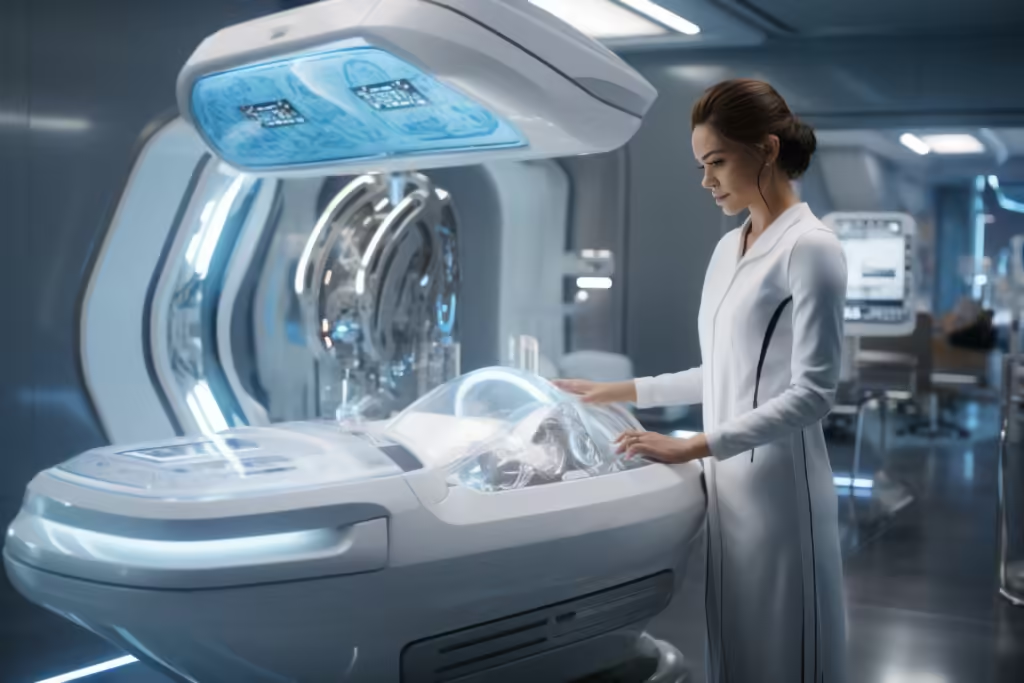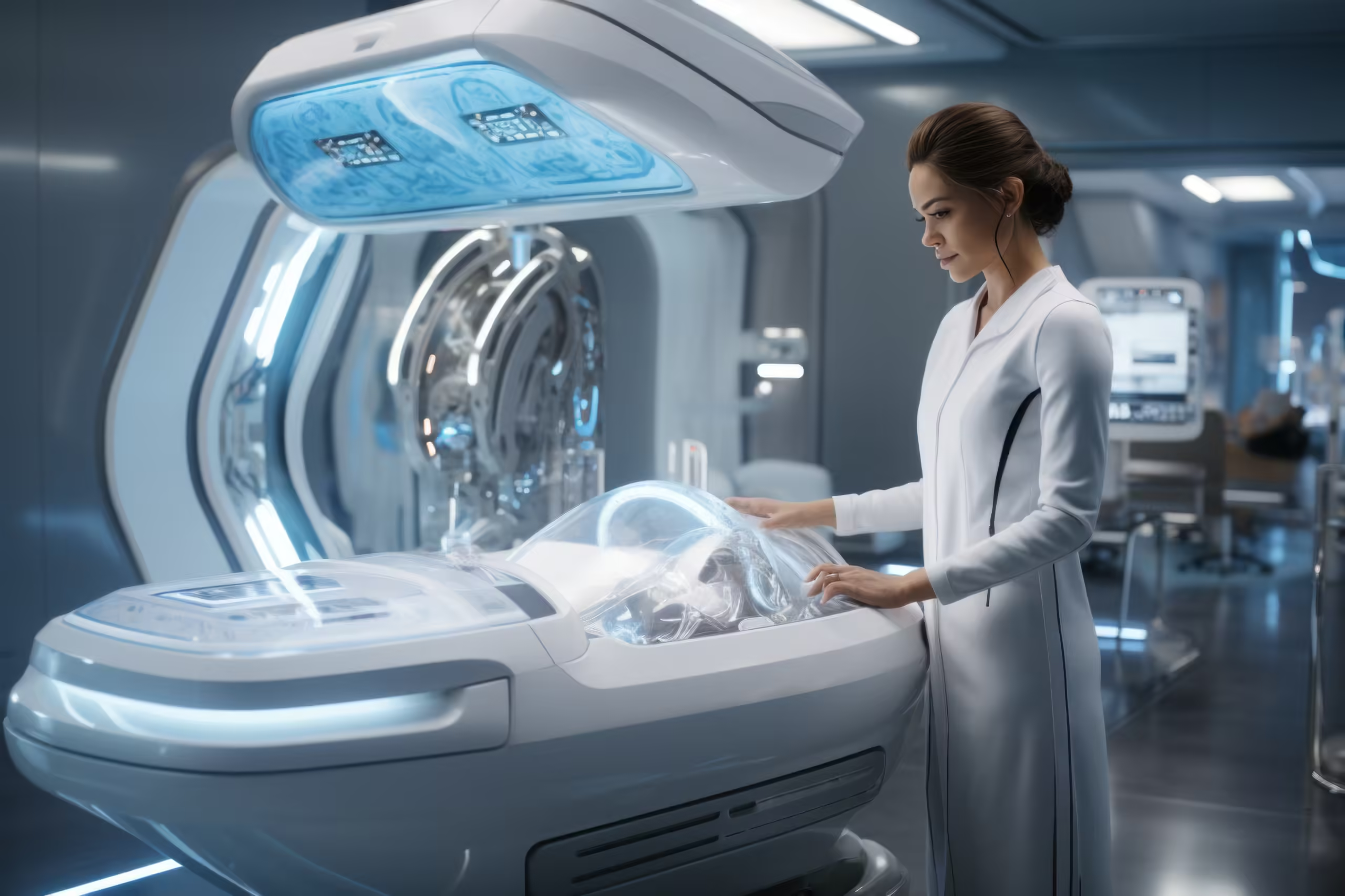In recent years, robotic surgery has moved from experimental to essential in cancer treatment. With precise, minimally invasive procedures, robotic systems have transformed complex surgeries. Surgeons now operate with enhanced precision and control, allowing them to target cancer cells without affecting surrounding healthy tissue. This has made robotic surgery a game-changer, offering improved accuracy, quicker recoveries, and fewer complications for patients.
What is Robotic Surgery in Cancer Treatment? An Overview
Robotic surgery in cancer treatment involves a surgeon using a robotic system to perform precise operations. This system typically includes robotic arms with specialized tools, a high-definition 3D camera, and a console where the surgeon controls each movement. Robotic surgery allows for better visualization and dexterity than human hands alone, enabling the surgeon to operate in small, delicate areas with exceptional accuracy. For patients, this often means smaller incisions, less pain, and a quicker return to daily life.
Key Benefits of Robotic Surgery in Cancer Therapy
Robotic surgery offers several unique benefits for cancer patients. First, it enables high precision, targeting cancer cells without damaging surrounding tissue. This precision minimizes bleeding and reduces the risk of infection. Second, robotic surgery is less invasive than traditional open surgery, resulting in smaller scars and shorter recovery times. Additionally, robotic systems allow surgeons to access areas that would be challenging through manual surgery, opening new treatment possibilities for hard-to-reach cancers.
Types of Cancers Treated with Robotic Surgery
Robotic surgery is used in treating a wide range of cancers, including prostate, kidney, lung, colorectal, and gynecological cancers. In prostate cancer, for instance, robotic-assisted surgery has become one of the most common approaches, allowing for precise removal of the prostate with minimal impact on surrounding tissues. Lung cancer surgeries also benefit from robotic systems, as they enable access to areas of the lung that are difficult to reach with traditional surgery. As robotic technology advances, the potential to treat other types of cancers continues to grow.

How Robotic Surgery Improves Precision in Cancer Therapy
Precision is one of the most critical factors in cancer surgery. Even a slight deviation can impact healthy tissue and increase recovery time. Robotic systems allow surgeons to make small, precise movements without the limitations of human hand stability. With the robotic arm’s range of motion and the surgeon’s enhanced view of the surgical site, the operation becomes more exact. This level of precision is essential in treating delicate areas, such as near the bladder or spinal cord, reducing the chance of complications.
Top Robotic Surgery Technologies Revolutionizing Cancer Treatment
Several robotic surgery systems have emerged as leaders in cancer treatment, each with unique features and capabilities. The da Vinci Surgical System is one of the most widely used, known for its precise control and high-definition 3D visualization. Other innovative technologies include the CyberKnife, which combines robotics with radiation to treat tumors without surgery, and the ROSA robotic system, used in neurosurgery for brain tumors. These advanced technologies offer cancer patients more options and hope in their treatment journeys.
Robotic-Assisted Surgery vs. Traditional Cancer Treatment Methods
While traditional methods like open surgery, chemotherapy, and radiation therapy remain essential in cancer treatment, robotic-assisted surgery offers distinct advantages. Unlike traditional surgery, robotic surgery is minimally invasive, resulting in fewer complications. Additionally, robotic-assisted surgery can access hard-to-reach tumors and is often more precise, which may lead to better outcomes and fewer side effects. Comparing both methods, robotic surgery is emerging as a superior option for many cancer types.
How Effective is Robotic Surgery in Cancer Treatment?
The success rates of robotic surgery in cancer treatment have been encouraging. Studies show that patients undergoing robotic surgery often experience fewer complications, reduced pain, and better overall outcomes compared to traditional surgery. In prostate cancer, for example, robotic-assisted surgery has led to higher rates of cancer control and fewer side effects like incontinence and erectile dysfunction. While success varies by cancer type and individual health, robotic surgery has demonstrated promising results across multiple cancer treatments.
Future Trends in Robotic Surgery for Cancer Treatment
As technology advances, so does the potential for robotic surgery in cancer treatment. The future may bring more compact, affordable, and versatile robotic systems that allow surgeons to operate with even greater accuracy. Artificial intelligence (AI) and machine learning are also expected to play a significant role, helping robotic systems learn from previous surgeries to improve performance. These trends suggest that robotic surgery will become even more precise and accessible, potentially making it a standard in cancer care.
Challenges and Limitations of Robotic Surgery in Cancer Treatment
While robotic surgery holds significant promise, it is not without challenges. The high cost of robotic systems can limit access for some healthcare facilities and patients. Additionally, not all surgeons are trained in robotic techniques, which can affect the quality of the procedure. Another limitation is that robotic systems rely on a learning curve; inexperienced surgeons may not achieve optimal results. As robotic surgery grows, addressing these challenges will be crucial to ensure its effectiveness and accessibility.
Is Robotic Surgery Right for Your Cancer Treatment?
Deciding on robotic surgery depends on several factors, including cancer type, stage, and personal health. Consulting with a specialized surgeon is essential to understand the benefits and potential risks for your specific case. For some patients, robotic surgery offers unmatched precision and a shorter recovery, while others may benefit more from traditional methods. Ultimately, it’s important to weigh all options and make an informed choice with your healthcare team.

